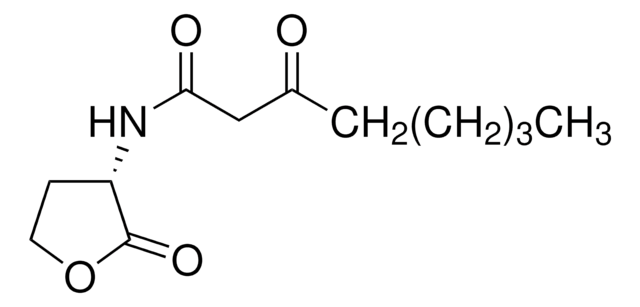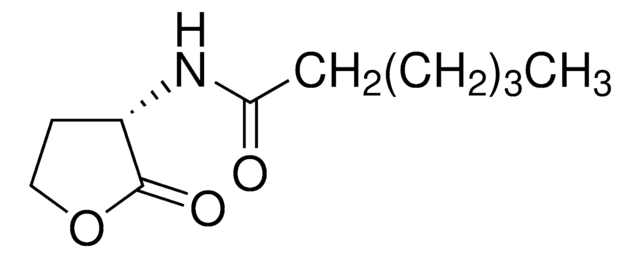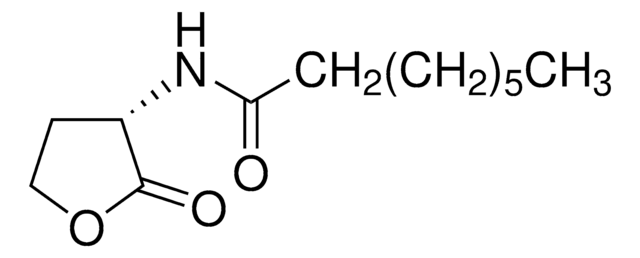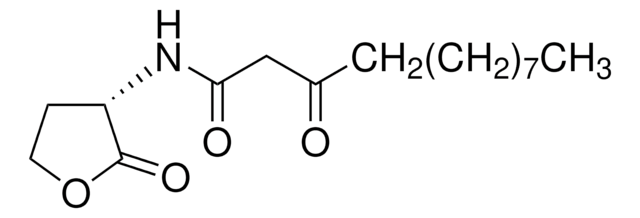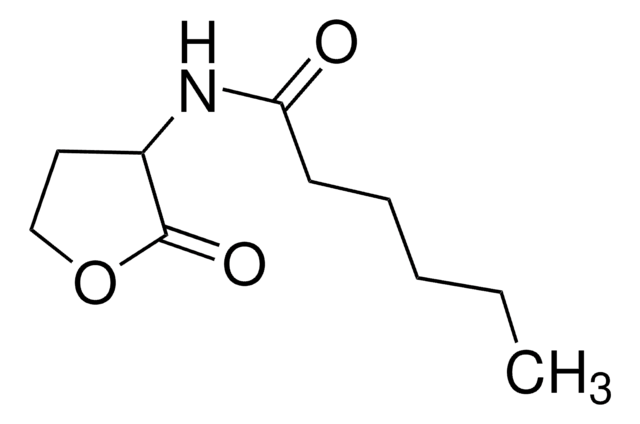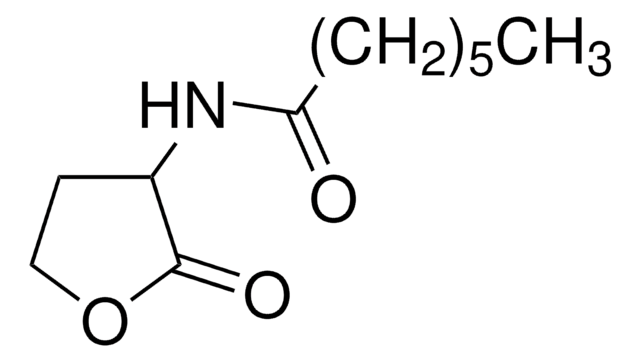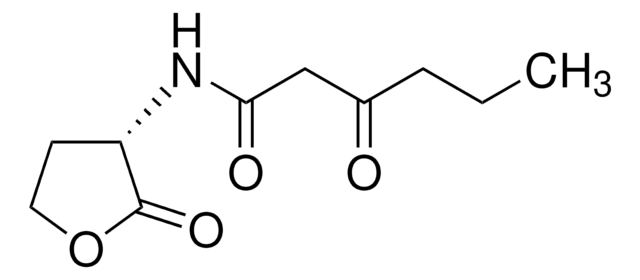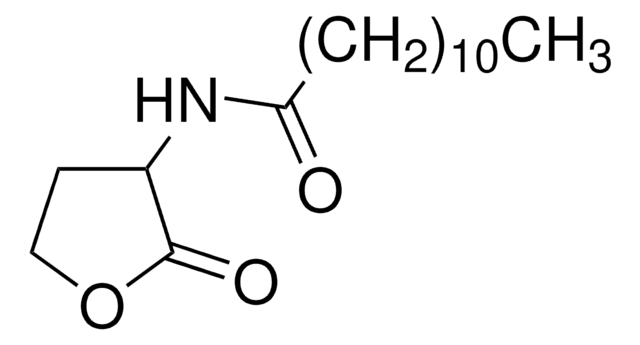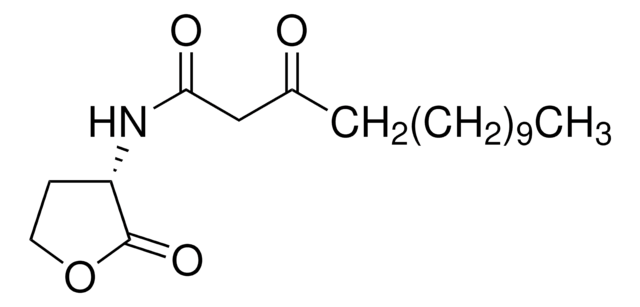51086
N-Heptanoyl-L-homoserin-lacton
≥96% (HPLC)
Synonym(e):
N-[(3S)-Tetrahydro-2-oxo-3-furanyl]-heptanamid
About This Item
Empfohlene Produkte
product name
N-Heptanoyl-L-homoserin-lacton, ≥96% (HPLC)
Qualitätsniveau
Assay
≥96% (HPLC)
Form
powder or crystals
Optische Aktivität
[α]/D -29±3°, c = 0.2 in methanol
Farbe
white
Eignung
conforms to structure for Proton NMR spectrum
Lagertemp.
−20°C
SMILES String
O=C1OCC[C@@H]1NC(CCCCCC)=O
InChI
1S/C11H19NO3/c1-2-3-4-5-6-10(13)12-9-7-8-15-11(9)14/h9H,2-8H2,1H3,(H,12,13)/t9-/m0/s1
InChIKey
FTMZLSDESAOPSZ-VIFPVBQESA-N
Biochem./physiol. Wirkung
Lagerklassenschlüssel
10 - Combustible liquids
WGK
WGK 3
Flammpunkt (°F)
Not applicable
Flammpunkt (°C)
Not applicable
Analysenzertifikate (COA)
Suchen Sie nach Analysenzertifikate (COA), indem Sie die Lot-/Chargennummer des Produkts eingeben. Lot- und Chargennummern sind auf dem Produktetikett hinter den Wörtern ‘Lot’ oder ‘Batch’ (Lot oder Charge) zu finden.
Besitzen Sie dieses Produkt bereits?
In der Dokumentenbibliothek finden Sie die Dokumentation zu den Produkten, die Sie kürzlich erworben haben.
Kunden haben sich ebenfalls angesehen
Unser Team von Wissenschaftlern verfügt über Erfahrung in allen Forschungsbereichen einschließlich Life Science, Materialwissenschaften, chemischer Synthese, Chromatographie, Analytik und vielen mehr..
Setzen Sie sich mit dem technischen Dienst in Verbindung.